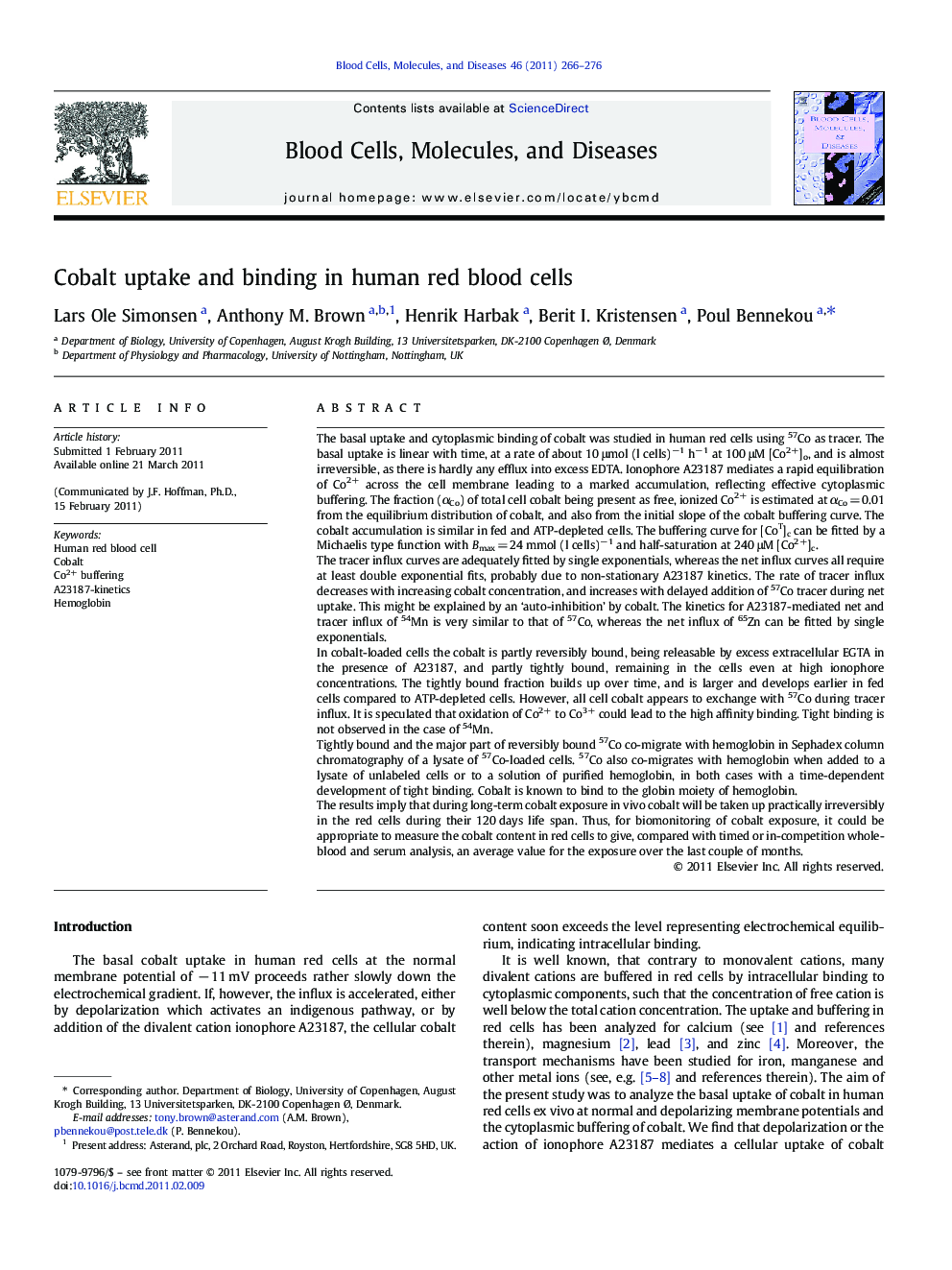| کد مقاله | کد نشریه | سال انتشار | مقاله انگلیسی | نسخه تمام متن |
|---|---|---|---|---|
| 2827463 | 1162446 | 2011 | 11 صفحه PDF | دانلود رایگان |

The basal uptake and cytoplasmic binding of cobalt was studied in human red cells using 57Co as tracer. The basal uptake is linear with time, at a rate of about 10 μmol (l cells)−1 h−1 at 100 μM [Co2+]o, and is almost irreversible, as there is hardly any efflux into excess EDTA. Ionophore A23187 mediates a rapid equilibration of Co2+ across the cell membrane leading to a marked accumulation, reflecting effective cytoplasmic buffering. The fraction (αCo) of total cell cobalt being present as free, ionized Co2+ is estimated at αCo = 0.01 from the equilibrium distribution of cobalt, and also from the initial slope of the cobalt buffering curve. The cobalt accumulation is similar in fed and ATP-depleted cells. The buffering curve for [CoT]c can be fitted by a Michaelis type function with Bmax = 24 mmol (l cells)−1 and half-saturation at 240 μM [Co2+]c.The tracer influx curves are adequately fitted by single exponentials, whereas the net influx curves all require at least double exponential fits, probably due to non-stationary A23187 kinetics. The rate of tracer influx decreases with increasing cobalt concentration, and increases with delayed addition of 57Co tracer during net uptake. This might be explained by an ‘auto-inhibition’ by cobalt. The kinetics for A23187-mediated net and tracer influx of 54Mn is very similar to that of 57Co, whereas the net influx of 65Zn can be fitted by single exponentials.In cobalt-loaded cells the cobalt is partly reversibly bound, being releasable by excess extracellular EGTA in the presence of A23187, and partly tightly bound, remaining in the cells even at high ionophore concentrations. The tightly bound fraction builds up over time, and is larger and develops earlier in fed cells compared to ATP-depleted cells. However, all cell cobalt appears to exchange with 57Co during tracer influx. It is speculated that oxidation of Co2+ to Co3+ could lead to the high affinity binding. Tight binding is not observed in the case of 54Mn.Tightly bound and the major part of reversibly bound 57Co co-migrate with hemoglobin in Sephadex column chromatography of a lysate of 57Co-loaded cells. 57Co also co-migrates with hemoglobin when added to a lysate of unlabeled cells or to a solution of purified hemoglobin, in both cases with a time-dependent development of tight binding. Cobalt is known to bind to the globin moiety of hemoglobin.The results imply that during long-term cobalt exposure in vivo cobalt will be taken up practically irreversibly in the red cells during their 120 days life span. Thus, for biomonitoring of cobalt exposure, it could be appropriate to measure the cobalt content in red cells to give, compared with timed or in-competition whole-blood and serum analysis, an average value for the exposure over the last couple of months.
Journal: Blood Cells, Molecules, and Diseases - Volume 46, Issue 4, 15 April 2011, Pages 266–276